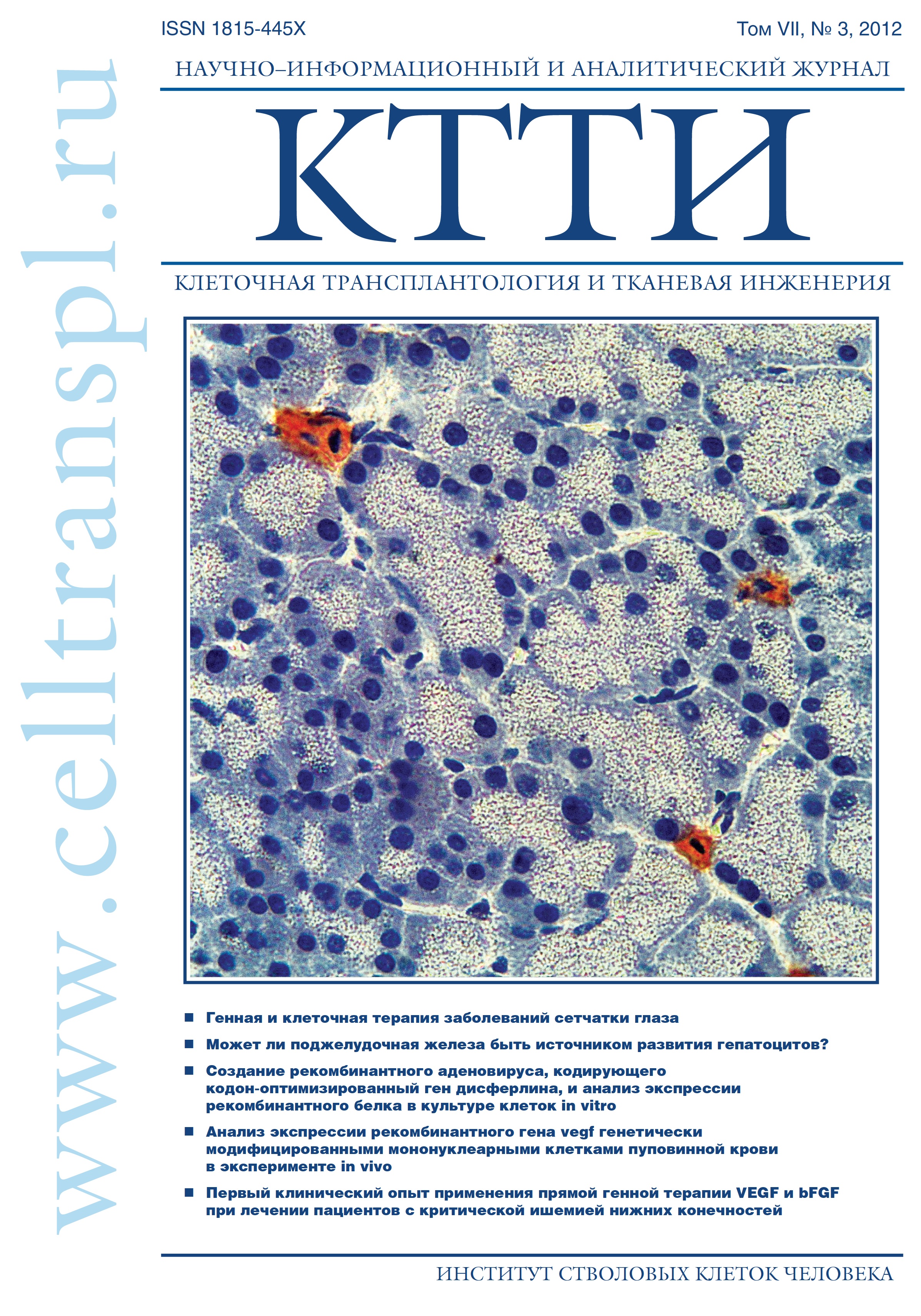Isolation, culture and differentiation of rat (Rattus norvegicus) and hamster (Mesocricetus auratus)adipose derived multipotent mesenchymal stromal cells
- Authors: Katina MN1, Gaifullina RF1, Hayatova ZG2, Emene C.C.1, Rizvanov AA1
-
Affiliations:
- Kazan (Volga Region) Federal University, Kazan
- Kazan State Medical University, Kazan
- Issue: Vol 7, No 3 (2012)
- Pages: 82-87
- Section: Articles
- URL: https://genescells.ru/2313-1829/article/view/121597
- DOI: https://doi.org/10.23868/gc121597
- ID: 121597
Cite item
Abstract
perspective fields in modern medicine. Adipose derived
autological stem cells can be obtained for therapeutic
purposes. Animal model of human diseases are essential for
cell therapy research. However, the most frequently used
laboratory animals, such as rats and mice, cant suffer the
whole rate of common diseases of modern society. At the
same time Syrian hamsters can provide scientists with an
appropriate animal models of these diseases. Nevertheless,
we couldnt find any data on hamsters stem cells isolation
and their characteristics. In this study we first isolated Syrian
hamsters adipose derived stem cells, characterized their
morphology, features and differential potential in several
ways. These cells are much alike multipotent mesenchymal
stromal cells and can go through osteogenic and, adipogenic
differentiation. We have also shown that these cells can
differentiate in neurogenic way.
About the authors
M N Katina
Kazan (Volga Region) Federal University, KazanKazan (Volga Region) Federal University, Kazan
R F Gaifullina
Kazan (Volga Region) Federal University, KazanKazan (Volga Region) Federal University, Kazan
Z G Hayatova
Kazan State Medical University, KazanKazan State Medical University, Kazan
Ch Ch Emene
Kazan (Volga Region) Federal University, KazanKazan (Volga Region) Federal University, Kazan
A A Rizvanov
Kazan (Volga Region) Federal University, KazanKazan (Volga Region) Federal University, Kazan
References
- Терских В.В. Биологические особенности и терапевтический потенциал стромальных клеток жировой ткани. В: Пластическая хи- рургия и косметология, 2010: 613-22.
- Повещенко О.В., Ким И.И., Ульянов Е.В. и др. Способы вы- деления и условия культивирования мезенхимальных стромальных клеток жировой ткани человека, полученной из различных источни- ков. Бюллетень СО РАМН 2008; 5: 90-5.
- Bobis S J., Majka M. Mesenchymal stem cells: characteristics and clinical applications. Folia Histochem. Cytobiol. 2006; 44(4): 215-30.
- Thomas M.A., Spencer J.F., La Regina M.C. et al. Syrian hamster as a permissive immunocompetent animal model for the study of oncolytic adenovirus vectors. Cancer Res. 2006; 66(3): 1270-6.
- Kajdacsy-Balla A., Howeedy A., Bagasra O. Syphilis in the Syrian hamster. A model of human venereal and congenital syphilis. Am. J. Pathol. 1987; 126(3): 599-601.
- McMartin D.N., Dodds W.J. Animal model of human disease: atrial thrombosis in aged Syrian hamsters. Am. J. Pathol. 1982; 107(2): 277-9.
- Susan V., Gibson D., Brady A.G. et al., editors. Syrian hamsters: viral, parasitic, and noninfectious diseases. Labarotary animal medicine and science seriese II. Alabama: University of South Alabama; 2000.
- Глушкова Т.Г., Маркова В.И. Нейрогенная дифференцировка мезенхимальных стволовых клеток. Морфологические ведомости 2011; 1: 132-5.
- Talens-Visconti R., Bonora A., Jover R. et al. Hepatogenic differentiation of human mesenchymal stem cells from adipose tissue in comparison with bone marrow mesenchymal stem cells. World J. Gastroenterol. 2006; 12(36): 5834-45.
- Генин А. М., Капланский А.С. Биоэтические правила про- ведения исследований на человеке и животных в авиационной, кос- мической и морской медицине. Авиакосмическая и экологическая медицина 2001; 4: 14-20.
- Bunnell B.A., Flaat M., Gagliardi C. et al. Adipose-derived stem cells: isolation, expansion and differentiation. Methods 2008; 45(2): 115-20.
- Sanchez-Ramos J., Song S., Cardozo-Pelaez F. et al. Adult bone marrow stromal cells differentiate into neural cells in vitro. Exp. Neurol. 2000; 164(2): 247-56.
Supplementary files










